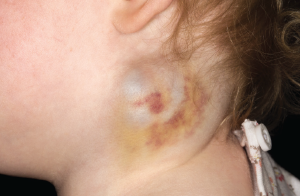SAN DIEGO—Investigators from around the country presented their findings at the 120th Annual Meeting of the Triological Society, held in conjunction with the 2017 Combined Otolaryngology Spring Meetings, held here April 28–29, 2017. Here are some research highlights from the event.
Explore This Issue
July 2017Blood Transfusion in Children with Sickle Cell Disease Undergoing Tonsillectomy

Sickle cells
© Stocktrek Images/Getty Images
In an analysis of the Kids’ Inpatient Database for trends in the use of blood transfusions, researchers found 1,133 pediatric patients with sickle cell disease (SCD) who had undergone tonsillectomy from 1997 through 2012. The patients were split into groups by blood transfusion status and compared across variables including complication rate, length of stay (LOS), and hospital charges.
There was a strong positive correlation between increasing chronologic year and the proportion of patients receiving blood transfusions, 47 (30.1%) in 1997 to 78 (42.5%) in 2012. During this period, there was no significant change in the rate of complications. Overall, patients receiving blood transfusion had a longer mean LOS (3.1±2.4 days vs. 2.5±2.2 days) and higher mean charge ($17,318±$13,191 vs. $13,532±$12,124) when compared with patients who did not receive blood transfusion.
The rate of complications in the transfusion group, 18 of 352 (5.1%), was not significantly different from the group without transfusion, 40 of 626 (6.4%).
The investigators concluded that there was a significant increase in the proportion of patients with SCD receiving perioperative blood transfusions for tonsillectomy. While the frequency of transfusion rose, those who received a transfusion had similar complication rates with increased charges and length of hospital stays compared with those who did not receive a transfusion.
Management Trends for Lymphatic Malformations in the U.S. (1997–2012)

Cystic hygroma.
© Dr. P. Marazzi / Science Source
In a review of the Kids’ Inpatients Database (KID) from 1997 through 2012, investigators found that the most commonly performed procedures for the treatment of lymphatic malformations (LMs) in pediatric patients were surgical excision, airway endoscopy, tongue procedures, salivary gland procedures, and sclerotherapy. The researchers tracked the frequency of each procedure group across each edition of the KID and compared complication rates between groups.
A total of 9,575 admissions included the diagnosis of LM. From 1997 to 2012, there was a significant overall change in management of patients with LM. This was primarily attributed to a significant decrease in surgical excisions, with 507 (30.4%) patients undergoing surgery in 1997 and only 193 (13.5%) in 2012. Simultaneously, there was a significant increase in the number of sclerotherapy procedures performed, rising from 19 (1.1%) to 117 (8.2%) patients. Patients undergoing sclerotherapy were roughly half as likely to experience a complication during admission compared with those undergoing surgical excision.